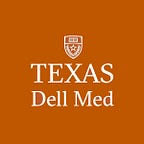Anatomy, Physiology … and Painting
Today’s medical students are studying art. But why?
Some doctors are so inundated with the business of medicine that good bedside manner has become a lost art. As a preventive measure, the new Dell Medical School, part of the University of Texas at Austin, is challenging students in its inaugural class to embrace their feelings by examining the fine arts.
The New York Times
March 11, 2017
Training future physician leaders means acknowledging that some of the qualities that make exceptional health care providers — like being observant, practicing empathy and exercising self-care — cannot be taught using traditional methods.
That’s the thinking at Dell Medical School in Austin, Texas, the first new med school to be built from the ground up at a top-tier research university in nearly half a century.
Leaders are partnering with the University of Texas’ Blanton Museum of Art to offer first-year students an experiential learning opportunity that challenges their communication skills and ability to work in teams, all in a low-risk setting where the focus is on works of art instead of textbooks — or live patients.
The New York Times: What Doctors Can Learn From Looking at Art
“It’s a way for us to bring these themes in early in the students’ training, when they don’t have the added pressures of thinking in terms of the diagnosis and treatment,” says Alejandro Moreno, MBBS, director of the school’s four-year course that teaches physical diagnosis and clinical skills.
Ray Williams is the Blanton’s director of education and academic affairs. Before coming to Austin, he worked at Harvard Art Museums, where he partnered with medical educators from Brigham and Women’s Hospital in Boston on a similar project designed to encourage interprofessional teamwork.
In Austin, Williams worked with Moreno and Clarissa Johnston, MD, to design the Dell Med experience at the Blanton.
“These lessons rescue medical students from their domain of expertise,” Williams explains. “We don’t expect them to know about art. They can just be observant, creative people working together to make sense of complex visual expressions.” Or, as he told The New York Times: “They don’t know about art. But they know how to look and think and talk together.”
Williams and museum educator Siobhan McCusker lead two-hour sessions at the Blanton focusing on observation, self-care and empathy. For one, Williams asks students to come to class with an image that shows how they practice self-care. Students discuss the images, then think together about how to balance their personal needs with the rigors of medical school.
A lesson focused on empathy asks small groups of students and mentors to contemplate works of art. Each person is asked to write a sentence from the point of view of a figure depicted in the work. Williams then tells groups to sequence the sentences, creating a poem. This simple activity requires several skills important to clinical practice: individuals imagine someone else’s situation and generate language, teams collaborate in ordering information, and a reader shares that information.
A third exercise pairs blindfolded students with a sighted peer who must carefully describe a work of art to create an image in the “blind” student’s mind. The activity reveals the importance of critical observation — and the consequence of poor description.
The students are practicing skills that will result in better care for their patients, says Johnston, an associate professor at Dell Med. She tells the story of an older man whose symptoms were consistent with tuberculosis despite no evidence of exposure to the contagious disease.
For physicians, observation and perspective are key.
- Clarissa Johnston, MD
“When I went to examine him, he had a tattoo right here,” Johnston says, pointing to the inside of her wrist. The man was a Holocaust survivor, and spent time in a concentration camp in Nazi Germany — a place where tuberculosis would have been common. In a crowded, noisy emergency room, Johnston had all the information she needed, acquired without having to interrogate a sick person who might have been reluctant to discuss a traumatic past in a public space.
The anecdote is illustrative, Johnston says. “For physicians, observation and perspective are key.”
